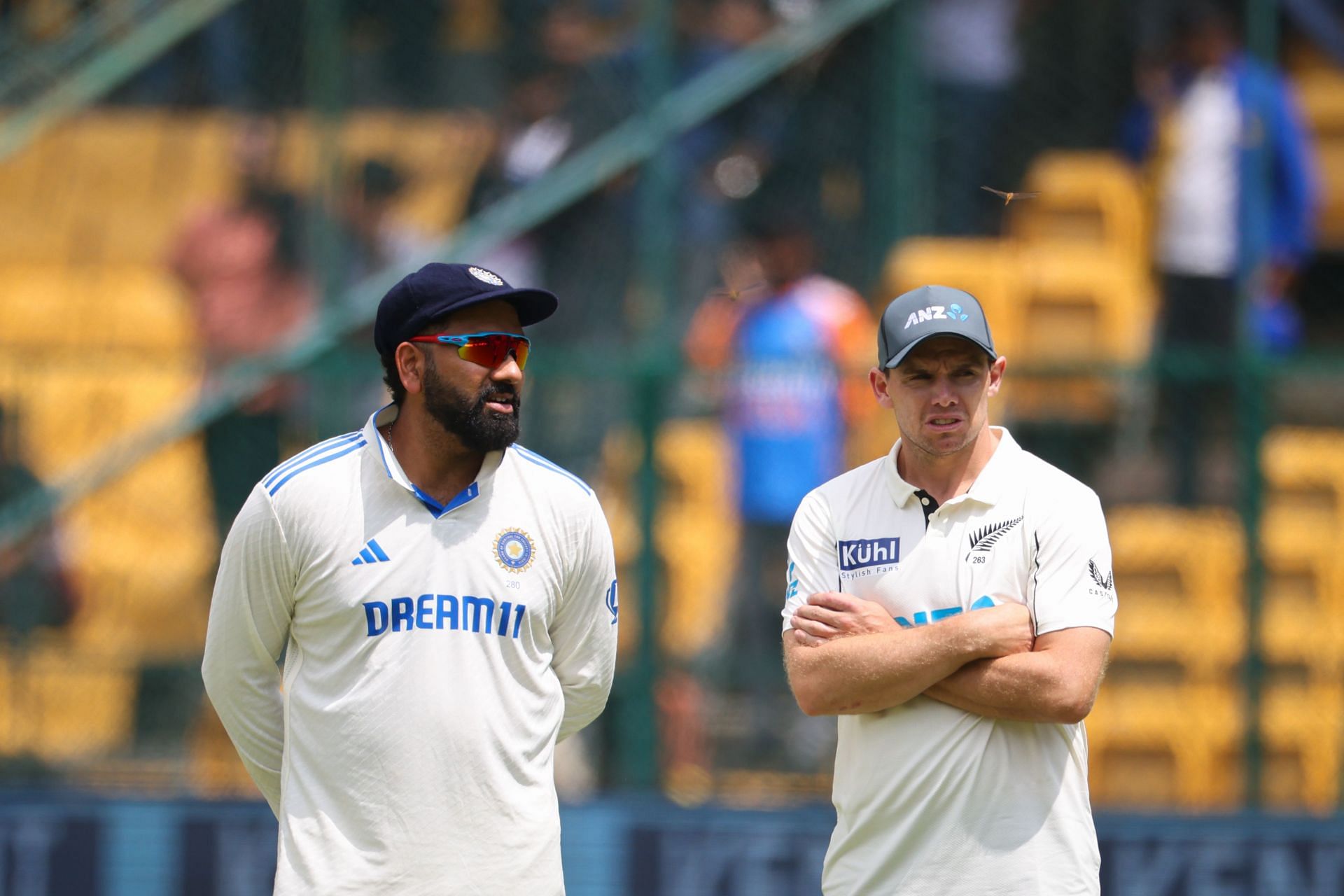
3 harsh lessons Team India learned from loss in IND vs NZ 2024 1st Test in Bengaluru
Team India suffered a shock eight-wicket loss to New Zealand in the first Test at the M Chinnaswamy Stadium in Bengaluru on Sunday, October 20. The defeat was India's first Test loss to the Kiwis at home in 36 years. For New Zealand, it was only their third Test win in India.
Batting first, the hosts folded up for an embarrassing 46 in 31.2 overs. New Zealand responded with 402 courtesy of Rachin Ravindra (134) and Devon Conway (91), while Tim Southee also chipped in with 65. In their second innings, India put up 462 as Sarfaraz Khan scored 150, while Rishabh Pant contributed 99. India, however, could only set the Kiwis a very gettable target of 107.
In the wake of Team India's unexpected loss in the first Test in Bengaluru, we analyze three harsh lessons for Rohit Sharma and co. from the defeat.
#1 It's okay to be conventional sometimes

In hindsight, India made a huge mistake by deciding to bat first after winning the toss in Bengaluru. Skipper Rohit also admitted that the move was a huge error in judgment on his part and that he did not expect the pitch to behave in the manner that it did on Day 2 of the Test match.
While every human is bound to make his fair share of mistakes, one wonders whether the decision to bat first had something to do with new India's idea of being bold and different. Over the last couple of years, Team India have tried to adopt an unconventional and aggressive approach, which has borne fruit for sure. At the same time, it's important to apply cricketing logic to decisions as well.
If we talk about the Bengaluru Test, the opening day of the match was completely washed out due to rain, as a result of which the pitch was under covers. It was but obvious there was going to be a lot of moisture under the surface for bowlers to exploit. Things are different when the conditions are overcast, but the rain hasn't come down yet.
As bizarre as it may sound, India's decision to bat first in Bengaluru against New Zealand seemed influenced by their approach to be different. The biggest lesson thus for Rohit and co. from the disaster in the first Test is that it's okay to make conventional decisions at times, keeping cricketing factors in mind.
#2 India's batting collapses don't augur well for Australia

Even though India made a mistake by deciding to bat first, that cannot be used as an excuse for being bundled out for 46 runs in 31.2 overs. The hosts ought to have shown better application with the willow, especially after they had made the decision to bat first under highly challenging conditions.
Once India had made their mind up to take the first strike, they needed to show a lot of resolve against the moving ball. Instead, Rohit threw his wicket away by attempting a slog off Southee, while the rest of the batters also did not show much application. India's batting approach was in complete contrast to the decision to bat first, which called for a cautious and determined method to tackle the Kiwi bowlers.
The hosts came up with a much more resolute effort in their second innings to post 462. Sarfaraz and Pant played wonderful knocks and featured in a fourth-wicket stand of 177. As long as they were at the crease, it seemed like India could push for a come-from-behind win. But they collapsed inexplicably after the stand was broken, losing seven wickets for 54 runs.
India's batting meltdowns in home conditions against New Zealand don't augur well for their upcoming tour of Australia. Batting will be a lot more challenging Down Under for the visitors against a much more experienced bowling attack.
#3 Lower-order batters remain an Achilles' heel for Team India's bowlers

After being rolled over for 46, India's bowlers did a good job to reduce New Zealand to 233-7. Had they restricted the Kiwis to under 275 in the first innings, things could have been a lot different in the Bengaluru Test. Instead, Ravindra and Southee added 137 runs for the eighth wicket, which dealt a telling blow to India's hopes of keeping down New Zealand's first-innings lead.
While a lower-order batter coming up with a defiant performance in the bat is not something unexpected in Test cricket, what's disappointing is the fact that this has been an Achilles' heel in Indian cricket for way too long. Back in the 90s as well, it was the same old story for India.
The hosts definitely seemed to miss seasoned pacer Mohammed Shami, who has that knack of knocking over the tail quickly. But with the uncertainty over his availability for the Australia series, Team India's inability to dislodge the tail does not augur well for the big challenges that lie ahead.